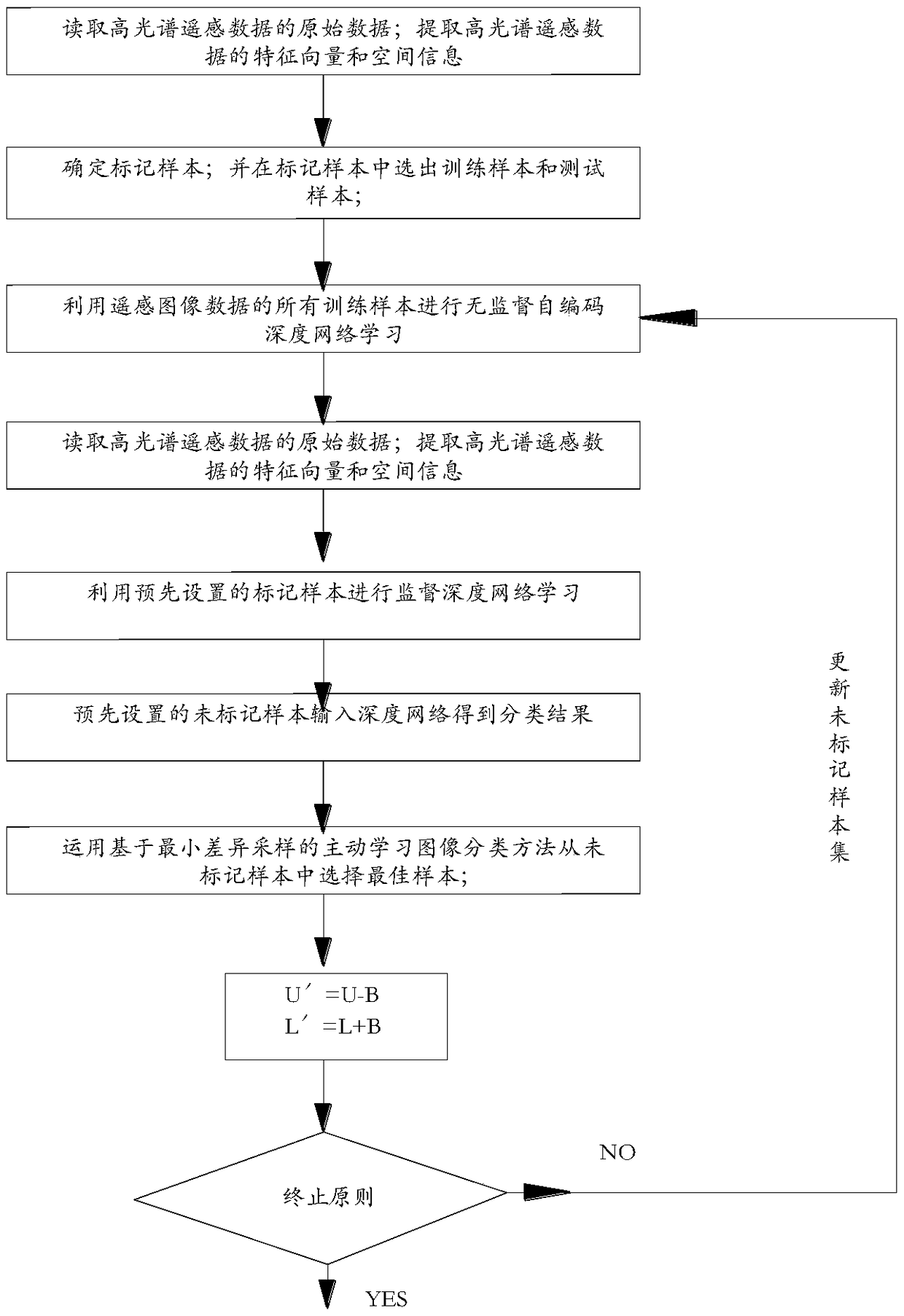A remote sensing data analysis method based on depth learning
A technology of remote sensing data and analysis methods, which is applied in the fields of instruments, character and pattern recognition, computer parts, etc., can solve the problems of low classification accuracy and large influence on the classification accuracy of the number of member models, so as to improve the efficiency and improve the classification accuracy. Accuracy, the effect of reducing the number of samples
- Summary
- Abstract
- Description
- Claims
- Application Information
AI Technical Summary
Problems solved by technology
Method used
Image
Examples
Embodiment Construction
[0029] The present invention will be further described below in conjunction with the accompanying drawings and embodiments.
[0030] like figure 1 As shown, a remote sensing data analysis method based on deep learning includes the following steps:
[0031] 1) Read the original data of hyperspectral remote sensing data; perform data preprocessing operations to reduce data dimensions; build a basic deep belief network model to extract feature vectors and spatial information of hyperspectral remote sensing data;
[0032] 2) by the eigenvector and the spatial information of the hyperspectral remote sensing data extracted in step 1), determine the marked sample; And select the training sample and the test sample in the marked sample;
[0033] 3) Use all training samples of remote sensing image data for unsupervised self-encoding deep network learning;
[0034] 4) Then use the pre-set labeled samples for supervised deep network learning;
[0035] 5) Use the pre-set unlabeled samp...
PUM
 Login to View More
Login to View More Abstract
Description
Claims
Application Information
 Login to View More
Login to View More - R&D
- Intellectual Property
- Life Sciences
- Materials
- Tech Scout
- Unparalleled Data Quality
- Higher Quality Content
- 60% Fewer Hallucinations
Browse by: Latest US Patents, China's latest patents, Technical Efficacy Thesaurus, Application Domain, Technology Topic, Popular Technical Reports.
© 2025 PatSnap. All rights reserved.Legal|Privacy policy|Modern Slavery Act Transparency Statement|Sitemap|About US| Contact US: help@patsnap.com



